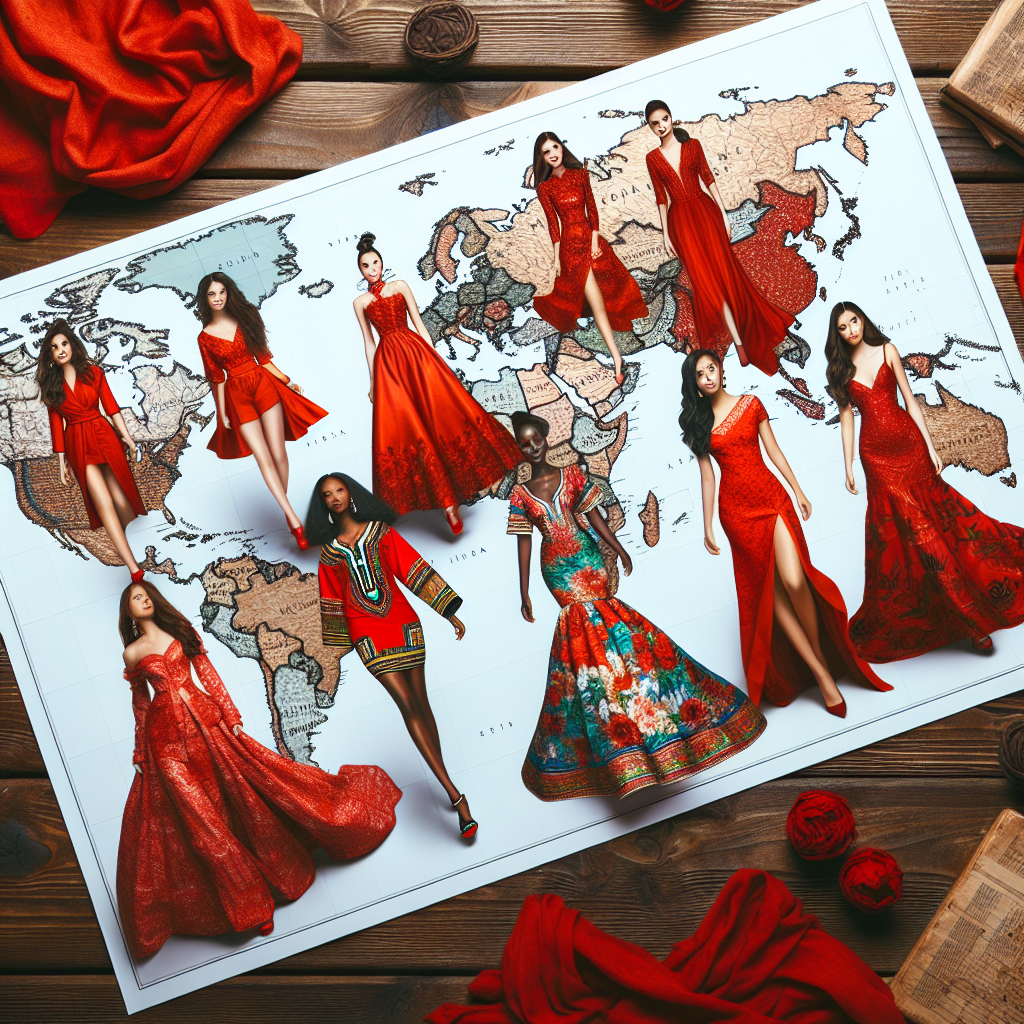Red Dresses Around the World: Global Fashion Perspectives
Red dresses hold a significant place in global fashion, symbolizing everything from love and passion to power and royalty. Across cultures, the red dress is not merely a fashion statement; it embodies traditions, celebrations, and deep-seated emotions. Each culture’s interpretation of red attire offers a unique glimpse into its values and societal norms.
In China, the color red is synonymous with good fortune and happiness. It is prominently worn during festivals, weddings, and other celebrations. Traditional Chinese dresses, known as qipaos or cheongsams, are tailored to showcase the wearer’s silhouette. The qipao, often made from silk and adorned with intricate embroidery, reflects elegance and cultural heritage. During weddings, brides wear a red qipao as a symbol of prosperity, ensuring a lucky future.
Across the Pacific in Mexico, the rich red hues of the traditional Huipil dress showcase indigenous artistry. These hand-woven garments are often adorned with vibrant patterns that represent the wearer’s community and heritage. The color red frequently appears during cultural celebrations, particularly during the Day of the Dead, where it symbolizes the remembrance of ancestors.
In India, red is often associated with marital status and is a significant color in various cultural contexts. The saree, a timeless garment, is often seen in shades of deep red, especially during weddings. The red saree is imbued with symbolism, representing love and fertility. In many regions, brides don a red saree adorned with gold embroidery, signifying their transition into married life and the new beginnings that come with it.
African cultures also embrace red dresses, although the styles and meanings vary widely. In West Africa, traditional dresses such as the ankara or kente print often feature vibrant red patterns, indicating celebration and joy. At cultural festivities like weddings, red attire is a favorite for both men and women, demonstrating a collective identity. The bold colors represent the vibrancy of African heritage and community spirit.
In Japan, the color red holds dual significance, symbolizing protection while also marking stability. The kimono, a traditional garment, occasionally showcases red as part of its intricate design, particularly during celebrations like the Shichi-Go-San festival for children. Red kimonos, often adorned with seasonal motifs, represent auspicious beginnings and the blessing of health and prosperity for the young.
Moving to the Western world, in Italy, red symbolizes passion and romance. The little red dress (LRD) emerged as a fashion staple, signifying empowerment and allure. Italian fashion houses like Valentino and Dior have popularized the LRD for years, showcasing its versatility—from sensual evening wear to stylish daytime attire. This iconic dress is celebrated in both casual and formal settings, drawing attention to the wearer’s confidence and charisma.
In the United States, red dresses are popularly associated with boldness and assertiveness. The Red Dress Campaign, part of the American Heart Association, uses the red dress as a symbol to raise awareness about heart disease in women. Celebrities frequently don red gowns at high-profile events, using fashion as a medium for activism and social change. The LRD’s role in American pop culture frequently mirrors themes of empowerment and independence.
In Korea, the hanbok, a traditional dress, often features cotton fabric dyed in vibrant red hues. Wearing a red hanbok during celebrations and ceremonies reflects joy and a vibrant spirit. The use of red highlights important cultural values, wherein the dress signifies respect towards family heritage and tradition during significant life events, like weddings and birthdays.
Brazilian fashion embraces red on various festive occasions, particularly during Carnival. Dancers don elaborate red costumes, showcasing creativity and enthusiasm. The color red in Carnival outfits typically signifies vitality and passion, attributes that reflect the energy stimulating this vibrant festival.
These diverse interpretations of the red dress across cultures emphasize its global significance. Each region enriches the narrative of the red dress, allowing it to transcend mere aesthetics and transform into a source of cultural storytelling. In incorporating such dresses into societal rituals and personal expressions, red continues to ignite creativity and innovation in fashion, remaining a powerful symbol of identity worldwide.



